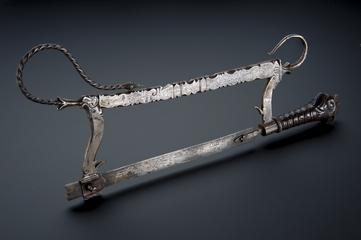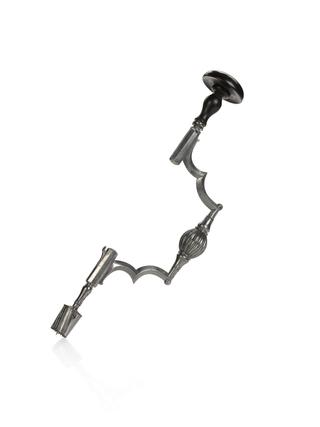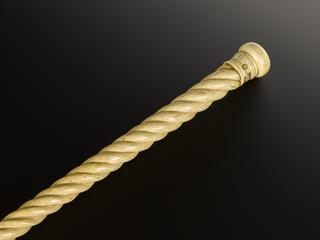
Trephine, in form of bow-drill shaft
- maker:
- Thomas Wilson Parry

Trephine, in form of bow-drill shaft, wood with worked flint blade, for trephining, probably English, 1900-1915
Trephination involves cutting into the skull to remove a small area of bone. It is probably the oldest surgical procedure, thought to date from around 5000 BCE and carried out across the world. Tools, such as pieces of flint and sharp animal teeth, were used to perform the operation although they would have taken a long time to cut through the skull compared to more modern instruments. Pain relief from plants or alcohol may have been used.
Thomas Wilson Parry (1866-1945) was a researcher who made and experimented with instruments of a type that would have been used to perform trephinations in the Neolithic period, such as this wooden shaft with a shark's tooth attached. Trephination is thought to have been performed in order to release spirits or humours from the body, which were believed to be responsible for causing illness, or to relieve pain. Few texts survive as to the reasons why the procedure was carried out. While the mortality rate was high, there is evidence that some people did survive the procedure as the holes show signs of healing.
Details
- Category:
- Surgery
- Collection:
- Sir Henry Wellcome's Museum Collection
- Object Number:
- A680632
- Materials:
- wood, shaft and flint, blade
- type:
- trephines
- credit:
- Loan, Wellcome Trust




